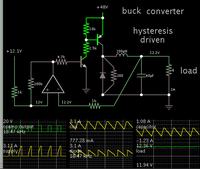Follow along with the video below to see how to install our site as a web app on your home screen.
Note: This feature may not be available in some browsers.

in our case if Udac=0 Uout=100V, is it possible to invert this relation (If Udac=0 Uout=0 and if Udac=3.3 Uout=100V)
Why not? Because of ghe supply rails?Can you replace 2.5V ref with the DAC output? You can't otherwise do 0-3.3->0-100
Hi,
Why not? Because of ghe supply rails?
Then just give the feedback resistor R1 a higher value to gain some headroom.
Klaus